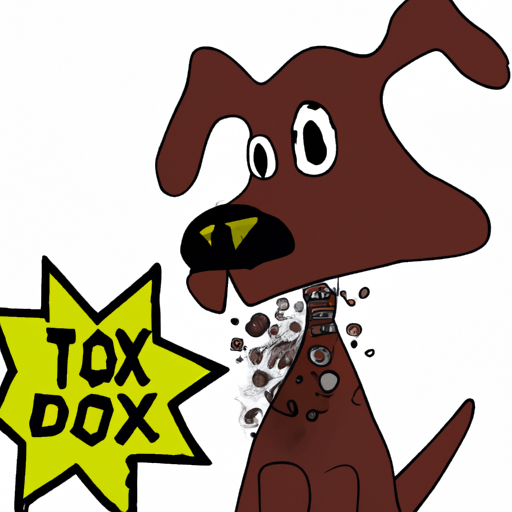It’s a common knowledge that chocolate is toxic to dogs. But what exactly makes it so? In this comprehensive guide, we’ll delve into the specific elements in chocolate that pose a risk to our canine friends, the symptoms of chocolate poisoning, and what to do if your dog ingests chocolate. We’ll also explore some preventative measures you can take to keep your furry friend safe.
Key Takeaways
- Theobromine and caffeine in chocolate are toxic to dogs.
- Dark chocolate, baking chocolate, and cocoa powder are the most dangerous types.
- Signs of chocolate poisoning include restlessness, increased thirst, abdominal discomfort, and potentially severe symptoms such as seizures.
- Immediate veterinary care is crucial if your dog ingests chocolate.
- Prevention is key: Store chocolate securely and educate others about chocolate toxicity.
Table of Contents
- Chocolate: A Sweet Treat that’s Bittersweet for Dogs
- The Toxic Components: Theobromine and Caffeine
- The Riskiest Types of Chocolate for Dogs
- Signs Your Dog May Have Ingested Chocolate
- What to Do If Your Dog Eats Chocolate
- Prevention: Keeping Your Dog Safe from Chocolate
- Frequently Asked Questions
Chocolate: A Sweet Treat that’s Bittersweet for Dogs
We humans often turn to chocolate as a sweet comfort food. But for dogs, this treat can be a deadly poison. The main culprit is two naturally occurring stimulants found in cacao seeds – theobromine and caffeine. These compounds are easily metabolized in humans, but dogs process them far more slowly, leading to a build-up that can be toxic or even fatal.
The Toxic Components: Theobromine and Caffeine
Theobromine and caffeine are both methylxanthines, a class of alkaloid. In humans, these compounds produce a pleasurable stimulant effect. However, dogs metabolize methylxanthines much more slowly than humans, which can lead to toxic levels in their system.
| Methylxanthine | Effect on Dogs |
|---|---|
| Theobromine | Causes central nervous system stimulation, increase in heart rate, and constriction of arteries. |
| Caffeine | Overstimulates the central nervous system. |
The Pet Poison Helpline provides a comprehensive guide on toxic substances for dogs, including chocolate.
The Riskiest Types of Chocolate for Dogs
Not all chocolates are created equal; darker chocolates and unsweetened baking chocolates contain higher levels of theobromine and caffeine, making them more toxic to dogs. According to the ASPCA, even white chocolate, which has minimal levels of these compounds, can be harmful due to the high fat and sugar content.
Signs Your Dog May Have Ingested Chocolate
If your dog ingests chocolate, they may exhibit several signs of distress:
- Restlessness or hyperactivity
- Increased thirst and urination
- Vomiting and diarrhea
- Elevated heart rate
- Seizures (in severe cases)
What to Do If Your Dog Eats Chocolate
If you suspect your dog has ingested chocolate, it is crucial to seek veterinary care immediately. OneTopDog provides a detailed guide on how to respond in such situations.
Prevention: Keeping Your Dog Safe from Chocolate
Prevention is much better than cure. Store chocolate in secure places, educate your family members about the dangers of feeding chocolate to dogs, and always supervise your pet during festivities where chocolate may be accessible. For more tips on dog safety, check out OneTopDog’s guide to keeping your dog safe.
Frequently Asked Questions
Q: Can a small amount of chocolate kill a dog?
A: It depends on the type of chocolate and the size of the dog. Dark chocolate, baking chocolate, and cocoa powder are the most dangerous. Even a small amount can be harmful to a small dog.
Q: How long after eating chocolate is a dog in danger?
A: Symptoms of chocolate poisoning can appear within 6 to 12 hours after your dog has eaten chocolate, but immediate veterinary care is recommended.
Q: What can I do if my dog eats chocolate and I can’t get to a vet?
A: Try to induce vomiting if the ingestion was recent, but it’s best to consult with a vet or a pet poison helpline immediately.
Remember, chocolate is a delightful treat for humans, but a dangerous toxin for dogs. Keep your canine companion safe by keeping chocolate out of their reach. Check out further dog safety tips and avoid a potential catastrophe.



